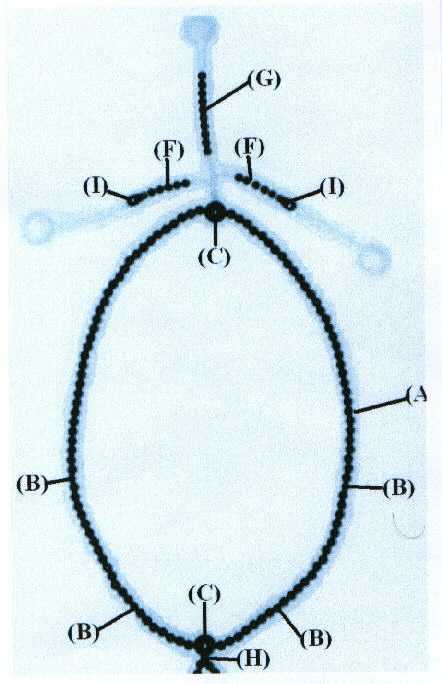The Meaning and Significance of the Prayer Beads

The Meaning and Significance of the Prayer Beads

|
People
did not use prayer beads at the time of Shakyamuni and they were only
introduced about a thousand years ago. Prior to that time,
people chanted mantras by counting red beans. Today however,the prayer beads are
a traditional accessory. The basic number of beads is 108, which is said
to represent the number of earthly desires which common mortals have. the
means of overcoming them.The number 108 can be found by the following
formula: 6 senses of Eyes, ears, nose, mouth, skin and the mind x 3
aspects of time (past, present, and future) = 18 x 2 characteristics of
one’s heart (pure or impure). Good or evil based on one’s karma. = 36
x The
prayer beads SGI members use symbolize various points of Buddhist
doctrine, and also can act as an aid to help focus during practice.
Holding the beads when we chant is a symbolic gesture towards transforming
our earthly desires into enlightenment and manifesting our wisdom. Prayer
beads are not a necessity for our daily practice however, and only act as
a tool . When
we use beads during Gongyo, the end of the figure eight, with the two
strands, is place over the third finger of the left hand. The end with the
three strands, over the third finger of the right. They lie on the outside
of the hands, which are placed together with palms and fingers touching
each other. Although
traditional meaning has been assigned to the various parts of the prayer
beads, they have no special power and are not an essential part of the
Buddhist practice. B)
The four small beads in the loop represent the four leaders or of the
Bodhisattvas of the earth and the four virtues of true self, purity,
eternity and happiness. C)
The two large beads at either end of the loop are called the ‘parent’
beads. D)
The 5 strands or tassles in and of themselves represent our growing will
to attain Kosen Rufu, and the pompom tassels at the ends represent Kosen
Rufu spreading throughout the world. E)
Ten
Worlds: Ten
life-conditions which a single entity of life manifests. . And equally
important is that Buddhahood is found within the reality of our lives in
the other nine worlds, not somewhere separate. (F)
Ten
Factors of Life:
An analysis of the unchanging aspects of life common to all changing
phenomena.While the Ten Worlds express the pattern of existence common to
all phenomena, the ten factors describe the pattern of existence common to
all phenomena. (G)
Counting beads: Each Buddhist School may have a different use for the Juzu,
but one of the main traditional uses is for counting prayers or
prostrations. H)
Fusion
of Reality and Wisdom (kyochi myogo):
The fusion of the objective reality or truth of the Buddha nature inherent
in one's life and the subjective wisdom to realize that truth. This fusion
is itself the attainment of Buddhahood. I)
Four out of five of the strands have larger beads on them shaped like
jars, and they are called "The Jars". They store the benefits
which disciples have accumulated from their practice to the Gohonzon. Other
Points: v
When
the beads are used, the circle that forms the main body of the Juzu is
closed by crossing the loop once. The reason for doing this is as a
symbolic gesture only, to safeguard from any of the benefits acquired by
practicing and chanting Daimoku from “falling through the hole”. v
The
Essential Doctrines of the v
By
placing our hands together while chanting signifies a fusion of reality (kyo)
with our inherent wisdom (chi);
or in other words the realization that our own life is one with the Mystic
Law of Life. v
Our
10 fingers/ 2 hands together in prayer symbolizes, and along with the
beads completely represents, the mutual possession of the 10 worlds, which
fuse together and manifest simultaneously in the life of a Buddha. v
Covering
the 4 “Bodhisattvas” and the “108 desires” with our hands in
prayer symbolize the principle – Bonno soku Bodai (Earthly Desires Are
Enlightenment). This act signifies gaining enlightenment in your present
form. |
|||
|
|